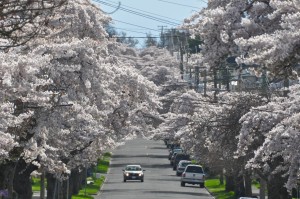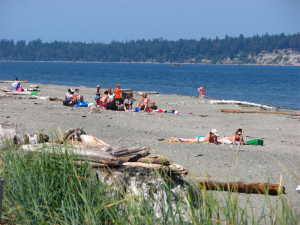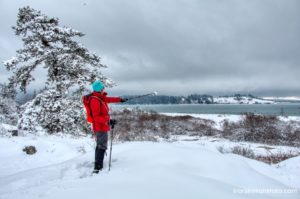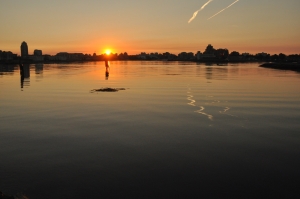 Victoria, BC, on Southern Vancouver Island is located in a temperate, sub-Mediterranean climate zone. This results in the mildest climate in Canada with comfortable dry summers with low humidity and onshore breezes to keep it cool; and winters where the temperature rarely falls below freezing. It is not surprising that Victoria is called the “Garden City”.
Victoria, BC, on Southern Vancouver Island is located in a temperate, sub-Mediterranean climate zone. This results in the mildest climate in Canada with comfortable dry summers with low humidity and onshore breezes to keep it cool; and winters where the temperature rarely falls below freezing. It is not surprising that Victoria is called the “Garden City”.
Victoria averages 308 days with some bright sunshine per year making it the 6th sunniest city in Canada. That’s 5 times more sunny days than Seattle and while the west coast is known for lots of rainfall, Victoria receives half that of Vancouver, BC which is located on the mainland. This temperate climate makes Victoria the ideal place for people who love the outdoors … no matter the season there’s always something to do outside!
What To Expect Seasonally
Spring
Springs are mild and arrive very early compared to the rest of Canada – as early as February. Temperatures average from 8 – 14 ºC (46 – 57 ºF) but can drop down to freezing overnight. Cherry blossoms, locally known as ‘Victoria Snow’, blanket the city while the majority of Canadians are still shoveling actual snow.
Summer
Victoria summers are comfortably warm and generally quite dry. Temperatures rarely climb above 30ºC (86 ºF) and average in the low to mid 20’s (68 ºF). The cooling effect of the surrounding Pacific ocean keeps things comfortable. Evenings generally cool down to the mid-teens making for great sleeping.
Autumn
Victoria’s sunny summer generally extends though September with fall arriving later in the month. Deciduous trees do change colour, with more yellows than reds here on the west coast, but the lawns and golf courses stay green and lots of evergreen foliage remains lush throughout the winter. Fall brings average highs of 12 ºC, but can be much warmer on occassion! The rainy season begins from mid-October to November and Victoria can receive up to 147 mm of rain during this period.
Winter
While Victoria can receive considerable rainfall during January, February and March, it can also experience the occasional snowfall. Sometimes a large amount! Luckily it doesn’t usually last too long! Even so, Victoria enjoys the mildest winter climate in Canada with the lowest rainfall on the west coast, allowing year round outdoor activities such as cycling, hiking, boating and golfing (and the occasional snowshoeing!)
Daily Temperature Chart for Victoria
What to Wear
Victoria’s weather can change quickly, particularly in the spring, fall and winter, so be prepared. Summer temperatures are generally warm enough for short sleeves and shorts, but be sure to bring along sweaters and long pants for those cool evenings or days with cool onshore breezes. Victoria is surrounded by the ocean, but the water is cold, averaging 11 – 12 °C (52– 54 ºF) year round, but local lakes are warm, so pack your bathing suit and beach shoes. However, make sure you bring long a wind-proof jacket and rain jacket for those cooler, damper days.
In winter, a waterproof breathable raincoat or medium-weight waterproof jacket is a good idea, preferably worn over warm layers. A good rain hat and/or an umbrella can also be a good accessory.
Checking the Local Weather
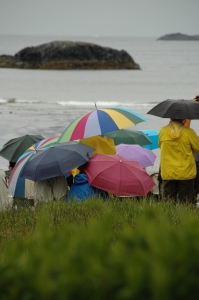 There are a number of good weather sites you can use to check the Victoria Weather, and the one you choose should be determined by the activities that you are going to be doing.
There are a number of good weather sites you can use to check the Victoria Weather, and the one you choose should be determined by the activities that you are going to be doing.
For general activities we recommend the following weather sites:
For boating, kayaking, windsurfing, kite boarding and SUP, we recommend the following sites:
BigWaveDave
Environment Canada Marine Weather Forecast
For Tides and Currents:

